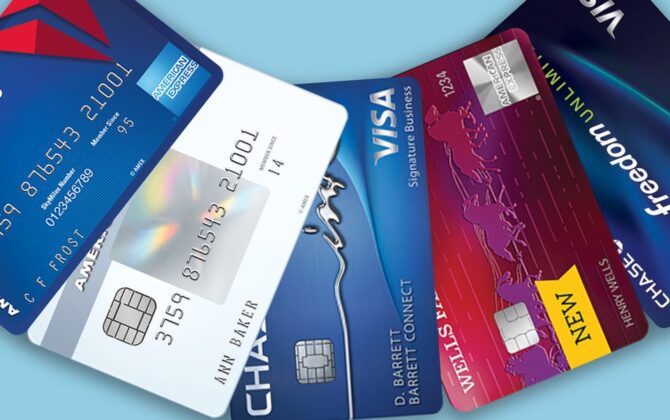You’ve worked hard to get here. Your academic studies are behind you, and a rewarding professional career is ahead of you. Right now, you may have student loan, personal loan, mortgage, or even credit card debt. You may feel overwhelmed by that number – especially when faced with the reality of starting salaries, training programs, and life events – but with some smart strategies, you can build a path to financial freedom.
A Practical Guide to Financial Independence for Young Professionals
With some smart strategies, you can build a path to financial freedom.


Manage your current debts
Get Organized. Gather the records of all your debt – student loans, car payments, mortgage, personal loans, credit cards, etc. – and keep it in a secure location. Include the amount, terms, payments, interest rates, and any other key information. Online tools can help you organize and manage this information, letting you access it from anywhere. Be sure to use a strong, unique password to protect this sensitive information.
Know What You Owe. Once you have everything in one place, you can see the full picture of your debt: how much you owe, monthly payment due dates, and your current payoff dates. For larger debts like student loan and mortgages, payoff dates are likely 10, 15, or 20 years away, but keep them in your sights so you can make informed financial decisions.
Understand Your Loan Repayment Options. For example, if you’re looking to pay off your student loans as quickly as possible – and who isn’t? – there are options available to you.
Consolidation
If you have multiple federal student loans, you may be interested in a Direct Loan Consolidation to simplify loan repayment. Loan consolidation gives you a single loan with one monthly bill (though any private loans are not eligible). This payment option often creates a longer payback term and it may not lower your interest rate. Consolidation can, however, give you access to additional loan repayment and forgiveness programs.
Refinancing
You can refinance both federal and private student loans with a private lender. Because refinancing creates a new loan, you could get a lower interest rate and change the term of your loan, especially if you have a good job and a strong credit history, which could save you money in interest payments and reduce the overall cost of the loan.
Pick a payment method that works for you. Regardless of the repayment option you select based on your needs and situation, you’ll be making monthly payments, and you have choices there, too.
AutoPay
You can set up an electronic funds transfer (EFT) to automate payments so that you’re never late. Some lenders even offer a rate discount for setting up autopay.
Manual
Manual payments allow you to be in control of when you pay but comes with the responsibility of ensuring bills are paid on time. If you want to overpay in a given month, you can easily do so.
Maximize your tax deductions. You may be eligible to deduct up to $2,500 of student loan interest paid in a given year. There are some restrictions, though. For example, your modified adjusted gross income can’t be above a certain amount, so check the income requirements each tax year. Please consult a tax professional for more information.
Map your financial goals
Start with your personal goals and milestones. We all have a vision for the life we want to lead. Turning the dream into reality is easier when you have a solid financial plan. For many, the plan includes buying a house and having a family. The more specific you can get with your goals, the more you can plan your finances accordingly. For example, how much does it cost to raise a family? That depends on where you live. Or maybe you have a hobby or a side gig that you want to pursue.
Include your professional goals. If having your own practice or another entrepreneurial venture is part of your dream, you’ll need financing to launch and grow, so make it part of your plan. There are a wide range of options, including securing investors (angel or venture capital), using current resources, and getting loans. Build a business plan to help determine your financial and business needs.
Assess your lifestyle. This is where you think about living your best life now and in the future. Assess your must-haves to achieve the quality of life you desire, and identify where you can cut back to instill financial discipline to achieve your goals. Do you value an urban lifestyle and frequent dining-out and are willing to give up having a car? Or do you want to raise a large family near where you grew up and will forgo expensive vacations to buy a home you can grow into? Decide where you can and can’t compromise.
Don’t forget to think long term. It’s never too early to start planning for retirement. In addition to paying into tax-advantaged savings plans, such as 401(k)s and IRAs, think about other savings you might want to put away. And don’t forget about Social Security. You should receive an annual statement in the mail that estimates your benefits, but you can also order one online.
Create a debt payoff strategy
Develop a savvy financial mindset. Financial jargon may be new to you, but fluency can help you make smart decisions. Establishing your goals and priorities gives you a framework to make choices.
Know your FICO score. Your FICO score is a credit score calculated by the Fair Isaac Corporation (FICO) that acts as an indicator of your creditworthiness. FICO reviews data from your credit report and provides you with a score between 300 and 850 that represents your credit profile. You can get your FICO score from any one of the three credit bureaus – Transunion, Experian, and Equifax. In general, FICO scores between 690 and 720 are considered good, and a score over 720 is considered excellent.
Is your credit report accurate?
You can check your credit report once a year for free at AnnualCreditReport.com.
What if Your FICO Score is Lower Than You’d Like?
There are five components that make up your FICO score, and each can be improved over time.
Payment history
Always pay your bills on time. Be prompt with all bills – not just your credit cards.
How much credit you use
Keep your credit balance low. Try to stay within 30% of your total credit line.
Length of your credit history
You cannot do much to influence this number besides wait, but do keep older credit accounts open with minimal use.
New credit applications
Avoid applying for too much new credit within a short period of time.
Types of credit you use
Ensure a variety of credit, such as student and car loans, so your debt isn’t solely from credit cards.
Use a Loan Repayment Strategy That Works for You
You want to pay all of your loan minimums, but how should you apply any remaining funds?
Debt avalanche
Debt snowball
With the “debt avalanche” approach, you apply whatever funds are left over after minimum payments are made to the debt with the highest interest rate. This approach will save you money on interest and can help pay off loans faster.
The “debt snowball” approach applies your remaining funds to repaying the debt with the smallest amount owed. If you are motivated by quick wins, this can be a good approach. As you eliminate smaller balances, you can free up extra money to focus on the next-largest balance.
You don’t necessarily have to choose; there may be a hybrid approach that’s best for you.
Setup a dedicated account. If you find it hard to stick to your budget, consider setting up a dedicated account and automatically moving money into that account for your obligations. That can help keep those funds out of sight and out of mind.
Make two payments per month. Although your loan payments are due monthly, you can still make multiple payments during the month. Making two smaller payments may feel less painful than one bigger payment at the end of the month. If you add a little extra to each principal payment, you probably won’t miss it – it can help you pay back the loan sooner and save on interest. You may want to set up autopay so you don’t have to manage multiple payments manually.
Create & stick to a monthly budget
Figure out your after-tax income. Your budget should be based on your take-home pay (income minus taxes and other deductions), not your gross salary.
Know your fixed costs. Fixed costs are bills and expenses that don’t vary from month to month, such as mortgage and other loan payments, utilities, etc.
50%
30%
20%
50% of your income (maximum) should go toward necessities. These are the essential expenses that you have to pay like groceries, utilities, and rent.
30% goes toward discretionary items, which are personal lifestyle expenses. The 30% rule can help you make the tradeoff between living the good life – however that’s defined for you – and living within your means.
20% should go toward savings, including contributions to retirement and other savings plans, as well as debt payments. You should make these payments after your essential expenses, but before any other spending.
Invest in your future
Plan for your family. A 529 college savings plan – officially known as a qualified tuition plan – is a tax-advantaged savings plan operated by a state or educational institution to help you save for future college costs. Most states now have at least one 529 plan available but they differ from state to state, so research these different plans before you invest.
Protect your assets and yourself with insurance. No matter how well you plan, things happen. Make sure you protect your most important assets. Property, health, and life insurance will add to your expenses, but they can save you a lot of money and aggravation if something goes wrong.
Create an emergency savings fund. Because insurance can’t cover every eventuality, having a financial cushion can help get you through an unexpected challenge. And don’t forget, if you have student loans, you may qualify for a forbearance allowing you to temporarily stop making your payments (interest may still accrue).
Have a plan for extra income. Sometimes, unexpected good things happen. If you come into extra money – a raise, year-end bonus, tax refund, inheritance – put a portion of it toward paying down your debt.
Don’t miss the latest financial resources.
This site is protected by reCAPTCHA and the Google Privacy Policy and Terms of Service apply.
Get tailored Laurel Road resources delivered to your inbox.
Search Results


